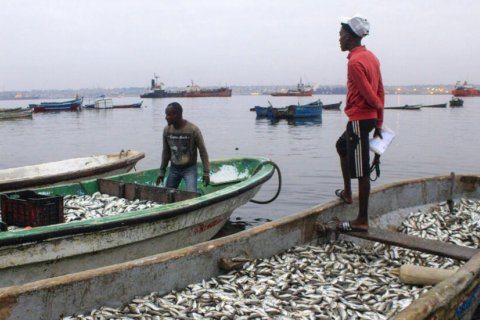The Angolan Water Supply Modernization and Expansion Project (PMEFA) presented this Tuesday in Luanda states that public water and sanitation companies in the 18 provinces spend 1,195,540,928.60 kwanzas per month on the acquisition of chemical products, totaling 14.3 billion kwanzas per year.
"These are the costs of importing these chemical products alone, in addition to other operational costs, hence the need to rationalize water consumption and avoid waste," said the Secretary of State for Water, António Belsa da Costa.
Aluminium sulfate, chlorine, granulated calcium hypochlorite, calcium hypochlorite tablets, hydrated lime and polymer additive are the chemical products imported in tons for water treatment in Angola.
The 15 water stations in the country's capital alone – which has nearly 10 million inhabitants – currently produce 780,756 cubic metres per day, insufficient to meet demand, with 40 percent of the population having general coverage and the rest having intermittent coverage.
With a daily production of almost 781 thousand cubic metres, Luanda currently has a deficit of 303,215 cubic metres, given that consumption needs are one million cubic metres/day, said António Belsa da Costa.
With the entry into operation of the Bita systems (expected to benefit 3.8 million inhabitants in the southeast, south and west of Luanda) and Quilonga Grande (expected to benefit 5 million inhabitants in peripheral areas of southwest Luanda), the current deficit (303,215 cubic metres) should fall to 234,897 cubic metres in 2026, said the minister.
Luanda currently has over 127,000 household connections.
According to the PMEFA, presented during the 29th thematic session of the "Communicating for Angola" program, the remaining 17 provinces are currently producing 676,949 cubic meters of water per day, a quantity that is "still insufficient".
The Angolan Water Supply Modernization and Expansion Project includes the construction of several supply systems in the interior of the country, with some of them under construction and others scheduled for completion in 2027.
"The expansion and modernization of the sector must be guaranteed through the construction, rehabilitation and expansion of infrastructure. Our role will involve supervising projects in the execution of works, defining financing models and mobilizing the necessary investments for the sector", he stressed.
António Belsa da Costa said, on the other hand, that the results achieved to date have not allowed the targets proposed for 2022 and 2023 to be met and could jeopardize the targets set for 2027.
In fact, the low level of investment made in the expansion of water infrastructure, "as well as in its maintenance and sustainability, has been the reason for the failure to meet the plan", he noted.
Creating 1.4 million new household connections, increasing the capacity to treat wastewater and faecal sludge to 198 thousand cubic metres/day, ensuring that the operating costs of companies in the sector are covered by revenues of 90 percent and reducing the volume of unbilled water by 20 percent are among the targets for up to 2027.
"Communicating for Angola" is an initiative of the Ministry of Telecommunications, Information Technologies and Social Communication.







